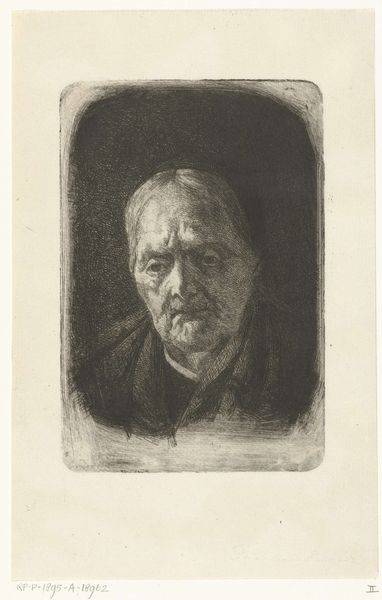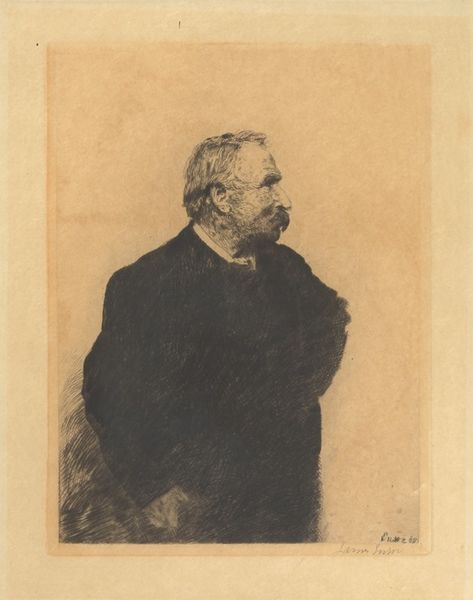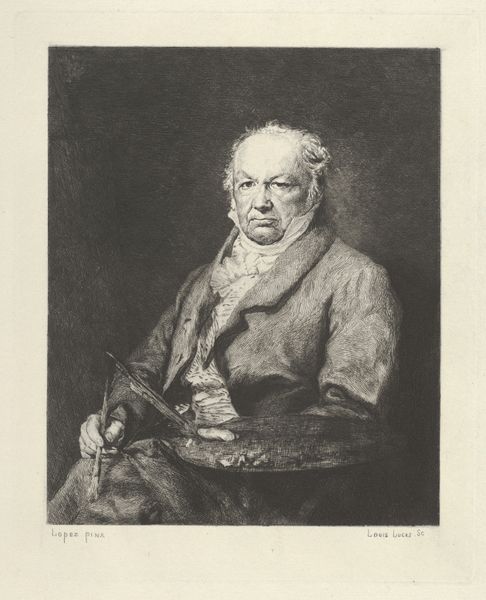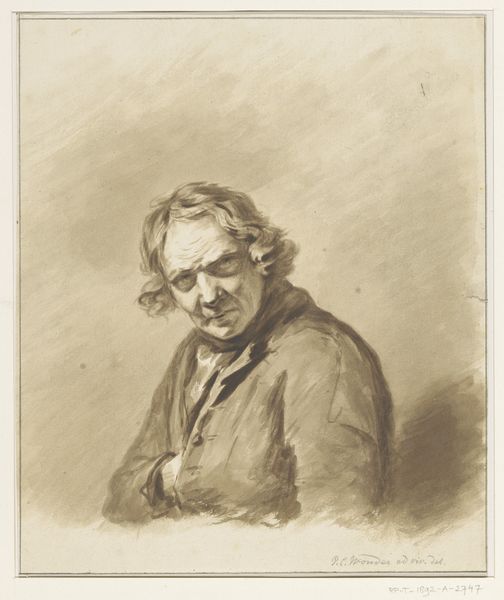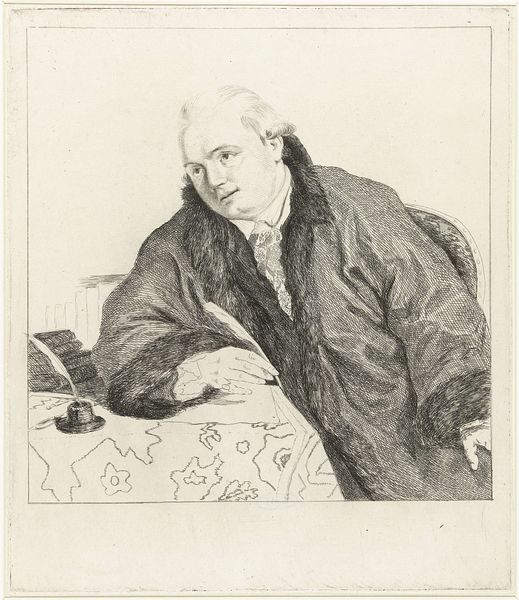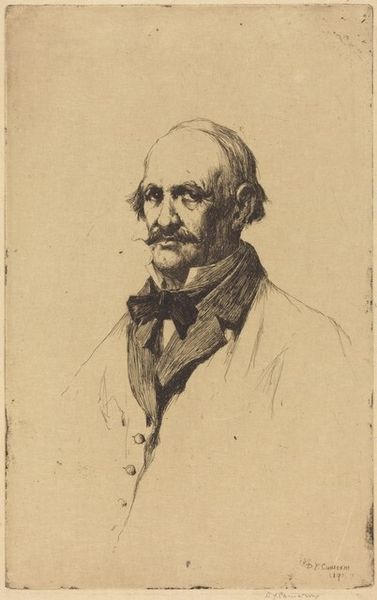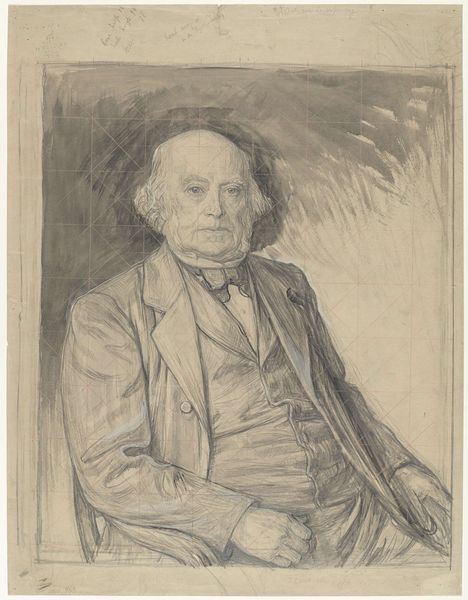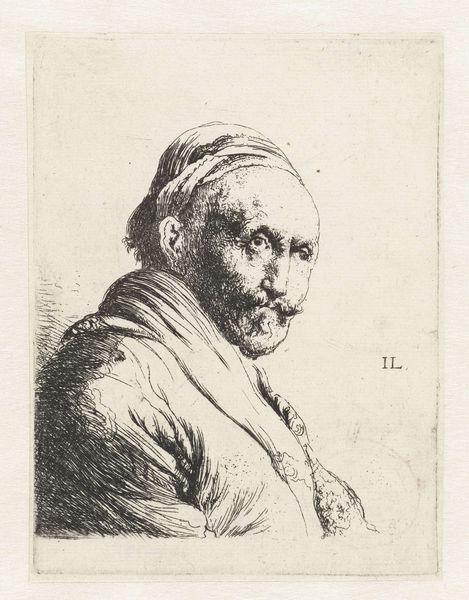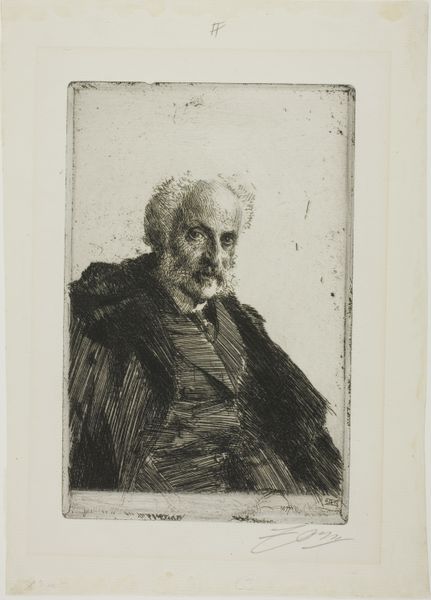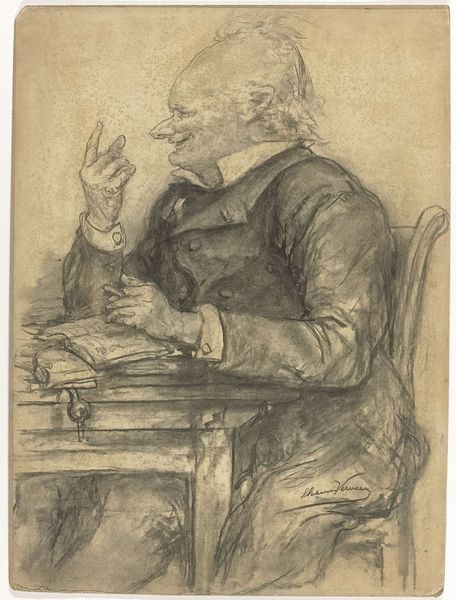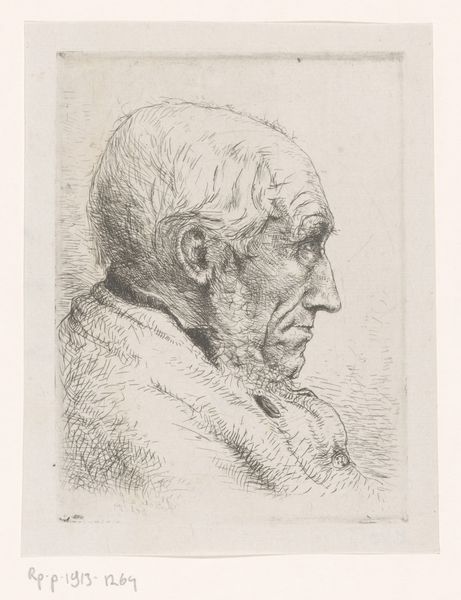
drawing, ink
#
portrait
#
pencil drawn
#
drawing
#
pencil sketch
#
charcoal drawing
#
ink
#
pencil drawing
#
portrait drawing
#
realism
Dimensions: width 157 mm, height 201 mm
Copyright: Rijks Museum: Open Domain
This is Jacobus Ludovicus Cornet’s "Portrait of an Unknown Man," an etching made sometime in the 19th century. Etching is an intriguing process. A metal plate, usually copper or zinc, is coated with a waxy, acid-resistant substance. The artist then scratches through this coating with a pointed tool, exposing the metal beneath. The plate is then immersed in acid, which bites into the exposed lines, creating grooves. The longer the plate is exposed to the acid, the deeper the lines become. Once the etching is complete, the plate is inked, and the surface wiped clean, leaving ink only in the etched lines. A damp sheet of paper is then laid on the plate, and both are run through a press, transferring the ink to the paper. The resulting print is a mirror image of the original design. The quality of the line is absolutely distinctive. Here, we see how Cornet used this linear quality to great effect to create a somber portrait, full of cross-hatched shadow. The lines, in effect, are the whole picture. And that’s the magic of an etching.
Comments
No comments
Be the first to comment and join the conversation on the ultimate creative platform.
